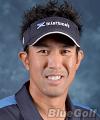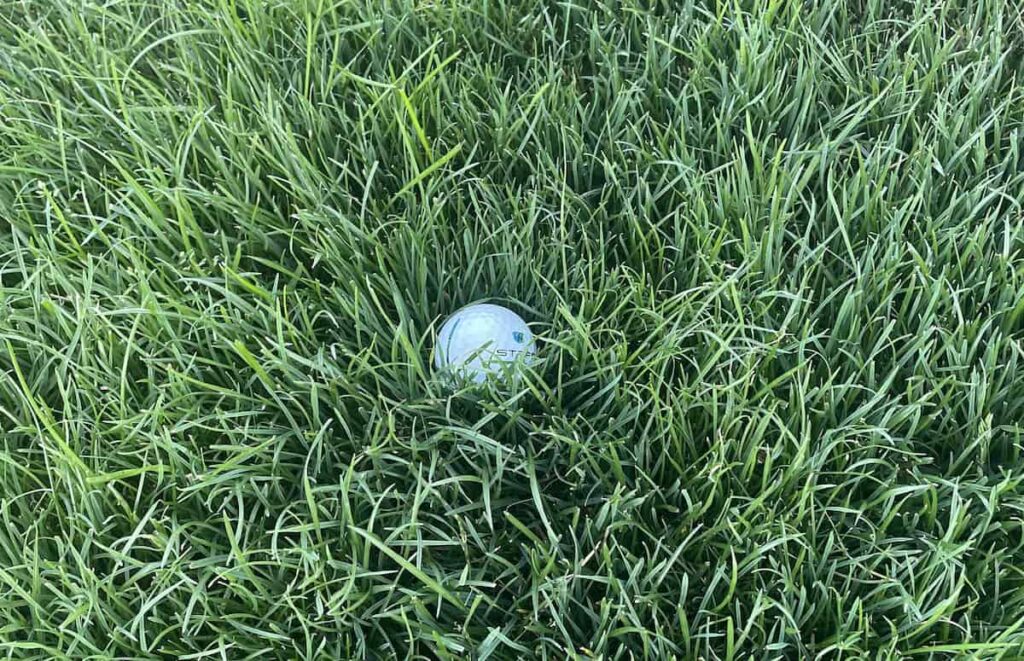Between 300,000 – 400,000 golf balls are lost every year, which translates to between 1-3 golf balls lost per round. Losing a golf ball can be a frustrating experience that disrupts the flow of your game and adds strokes to your scorecard. The last thing you want to do is walk back to the tee box to re-hit your drive. Whether it’s hidden in tall grass, nestled in thick rough, or submerged in a water hazard, finding a lost golf ball requires patience, keen observation skills, and a systematic approach.
Strategies and Tips for Retrieving Your Lost Shots
Let’s explore various strategies, techniques, and tips to help you increase your chances of locating a lost golf ball, enabling you to keep the game moving and minimize the impact on your score.
Initial Observations and Marking
When you suspect your ball may be lost, take note of where you last saw it and any visual markers or landmarks that can assist in narrowing down the search area. Those markers could include a large tree, a curve in the cart path or even a fence. Mark the position with a tee or a nearby object to reference later. Initial observations when planning your shot or marking the distances of obstacles can help with the depth of where your ball could be.
Involve Playing Partners
Enlist the help of your playing partners to form a search party. As soon as you hit a wayward shot, I like to be vocal to inform my playing partners that I need more eyes on the ball. Most players will keep an eye on these shots because it only helps the group with keeping pace and keeping the integrity of the game helping competitors and opponents.
Systematic Search Patterns
Adopt a systematic approach to cover the search area effectively. Start by creating imaginary lanes or sections, dividing the area into smaller segments. Begin searching from the edge closest to the last known location and work your way outwards in a grid-like pattern. This methodical search ensures thorough coverage and minimizes the chances of overlooking the ball.
Visual Cues and Distinctive Features
Keep an eye out for visual cues or distinctive features that can aid in locating the lost ball. Look for flashes of white or bright colors against the natural surroundings. Balls can often nestle in rough patches, under leaves, or near bushes. Scan for unusual shapes or unnatural objects that may indicate the presence of the ball. I usually bring a club with me in my searches to comb thick areas to hopefully show a piece of the ball.
Stay Alert to Audio Cues
Sometimes, the sound of a ball hitting a tree, cart path, or water can provide auditory clues to its whereabouts. If you suspect the ball may have deflected off an object, take a moment to listen for any unusual sounds that may guide your search.
Use Technology and Tools
Leverage modern technology to assist in finding lost golf balls. Golf ball finders, equipped with specialized lenses, can help detect balls hidden in foliage. Some players prefer wearing sunglasses with a certain tint to capture the ball better in the sky. I have two pairs with different tints that I use depending on the type of weather and time of day.
Time Management
While it’s important to make a diligent effort to find a lost ball, be mindful of time constraints. The Rules of Golf dictate a maximum time limit of three minutes as soon as the player whose ball is being searched for. If you’re unable to locate the ball within a reasonable timeframe, apply the appropriate penalty and continue with the game to maintain pace of play.
Know the Rules
Familiarize yourself with the rules of golf regarding lost balls and penalty strokes. Understanding the specific guidelines can help you make informed decisions during your search and minimize the impact on your score.
Let It Go
Despite your best efforts, some golf balls may be irretrievably lost. Accepting this reality and moving on is essential for maintaining focus and enjoyment of the game. Keep spare balls handy to avoid excessive delays, and maintain a positive mindset throughout the round.
Fix your eyes
Lastly, visit your optometrist and get your eyes checked to see if you have good vision. This may sound extreme just for golf but you should just for your daily lifestyle. I had Lasik done 7 years ago but in my older age, I am losing some near-sighted vision in one eye while the other eye is the opposite. I now wear one contact lens in the near-sighted eye so I can see my ball land more clearly and anything else I do in life.
How Many Strokes Do You Lose When You Hit a Ball In the Water?
You will incur a penalty stroke if you hit your ball into a water hazard. The number of strokes you “lose” depends on the option you choose under the rules. In general, you have the choice to play the ball from where it entered the hazard with a one-stroke penalty, essentially losing one stroke from your score. There are also other options, such as taking a lateral drop within two club lengths of where the ball last crossed the hazard boundary, each with a one-stroke penalty.
Conclusion
Losing a golf ball is an inevitable part of the game, but with a systematic approach and a keen eye, you can improve your chances of locating lost balls and minimize their impact on your score. By adopting the strategies and techniques outlined in this guide, you’ll be equipped to handle the challenges of finding lost golf balls efficiently, allowing you to maintain the flow of the game and enjoy your rounds with confidence. Remember, patience, observation, and a systematic search pattern are key to maximizing your success in locating those elusive golf balls.


